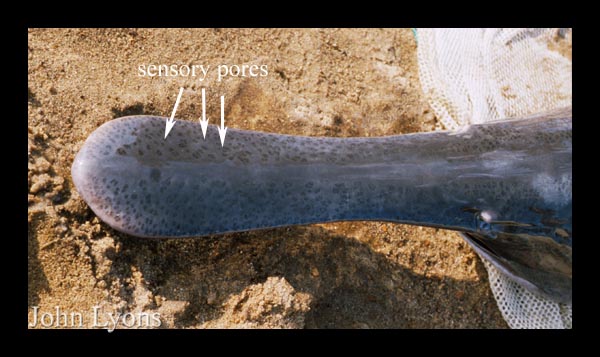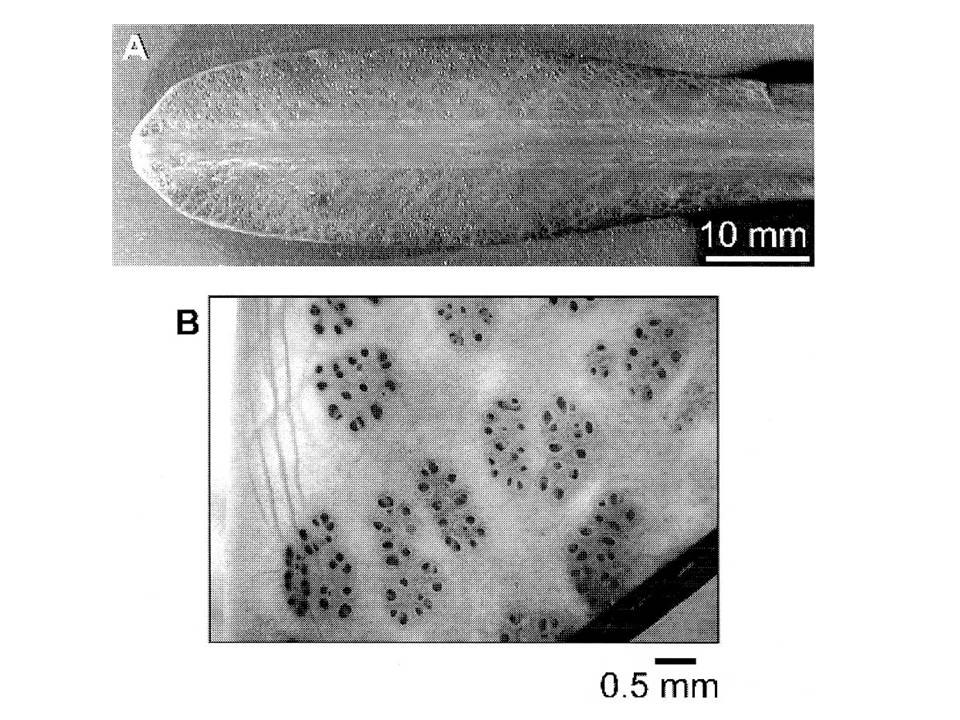Adaptation
Adaptations that Polyodon spathula has developed to avoid predation are the large size and the extended life span. Polyodon spathula produce high concentrations of offspring in a single season as a possible predator satiating mechanism to maximize the chances that a portion of the species can survive. Motility is achieved by swimming in a manner such that it requires undulation of nearly the entire body. Another adaptation Polyodon spathula utilizes are the sensory pores that can be found on the rostrum of the organism. It is not very well known what the function of the rostrum itself is, but there is research being done about what the role of the sensory pores found on the rostrums is. As more and more organisms inhabit the same habitats as the American Paddlefish, it has had to make adaptations that would allow it to continue being able to obtain its food, Daphnia spp. Thanks to the work of anatomists (Jorgensen et al., 1972) who showed that the rostrum is covered with tens of thousands of sensory receptors, understanding of the American Paddlefish’s rostrum and its function can start to take shape. The sensory receptors of the American Paddlefish are morphologically similar to the ampullae of Lorenzini of sharks and rays which known to be passive electroreceptors. The American Paddlefish also has clusters of electroreceptors found on the cover of its head and the gill covers. It was still unclear, however, what the actual function of these receptors until the work of Neiman and his colleagues since 1993 that helped establish the fact that the receptors are indeed passive ampullary-type electroreceptors. These receptors respond to the microvolt-scale electrical signals emitted by the American Paddlefish’s prey (Daphnia). Having the rostrum out in the front of the mouth allows it to function as an “early warning system” for approaching prey. In short, the rostrum functions as the Paddlefish’s antenna that carries arrays of electrosensors.

Figure 8. Sensory pores can be found on the rostrum of Paddlefish.

Figure 9. A. The underside of the rostrum of
a Paddlefish. B. A close-up of the sensory receptors on the rostrum.
What does the American Paddlefish call food?
Go to the
Nutrition page to find out.
Visit
MultipleOrganisms.net to explore more organisms!
Visit the University of Wisconsin-La Crosse,
birthplace of the Multiple Organisms web pages!